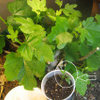At Tantanman
blueboy1977
10 years ago
More Discussions
Hey Tantanman, I believe we live pretty close to each other. Im in South Houston and I noticed you mention using Micro Life on your citrus. Is that all you use on your citrus? Ive been using MiroLife exclusivily for 4 years on my blueberries and they are very healty. Ive got several citrus in pots that will eventually be planted in the ground when our new house is finished late this year. Ive been using Micro Life in my pots as well for a year and havent seen any problems to date but just wondering what your fertilizing procedure is for pots and inground trees in our area?

tantanman
blueboy1977Original Author
Related Professionals
Zion Landscape Architects & Landscape Designers · Washington Landscape Architects & Landscape Designers · Matthews Landscape Contractors · Ashburn Landscape Contractors · Bainbridge Island Landscape Contractors · Belvedere Park Landscape Contractors · Lyndhurst Landscape Contractors · Northport Landscape Contractors · Ronkonkoma Landscape Contractors · Tavares Landscape Contractors · Wareham Landscape Contractors · West Haverstraw Landscape Contractors · Wilsonville Landscape Contractors · Palos Heights Landscape Contractors · Okolona Stone, Pavers & Concretetantanman